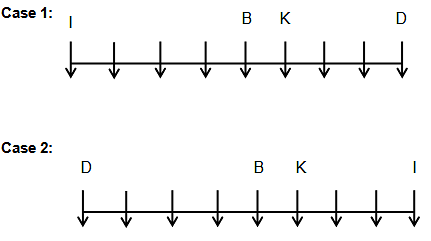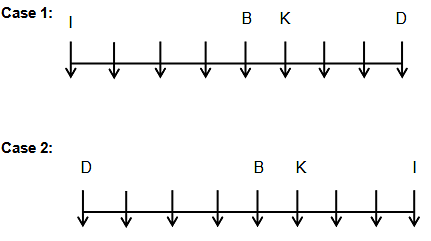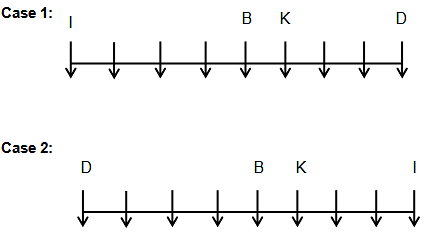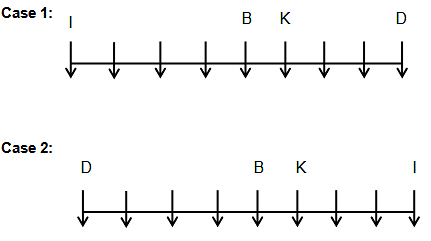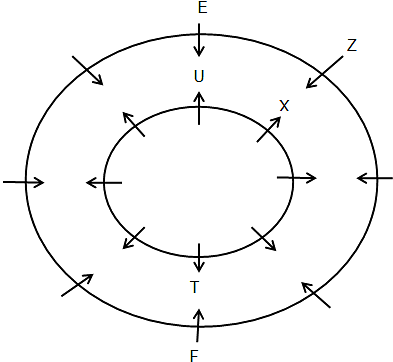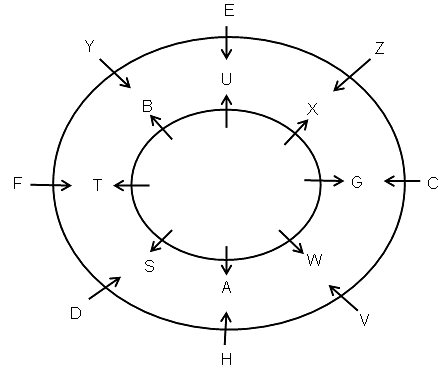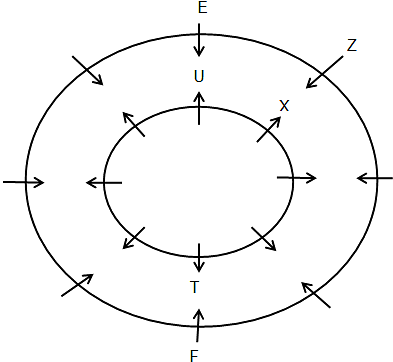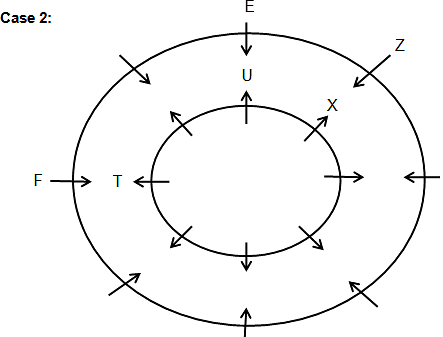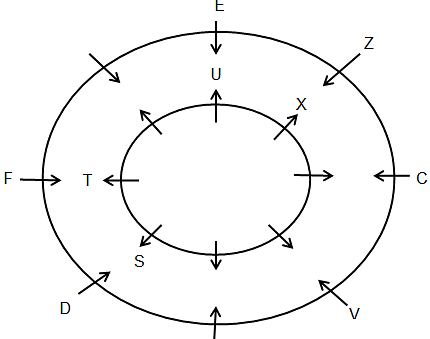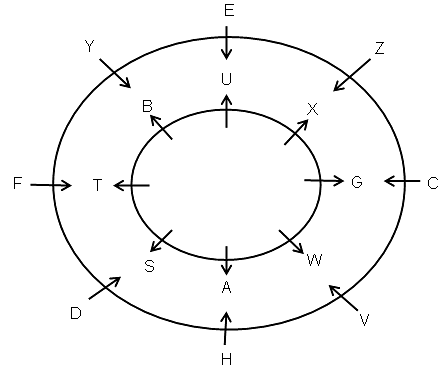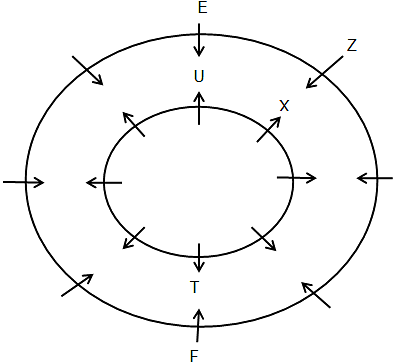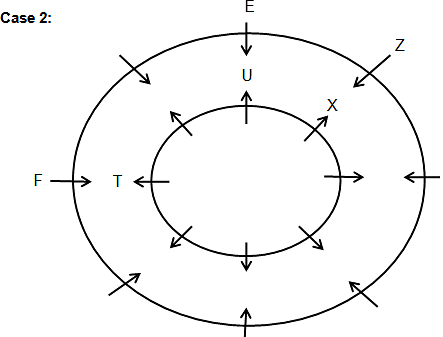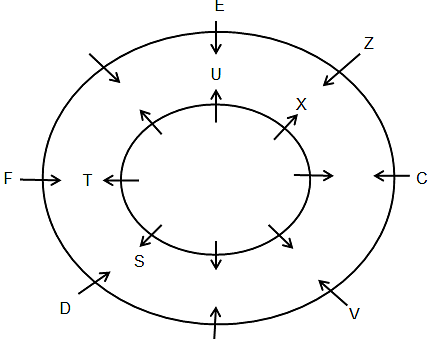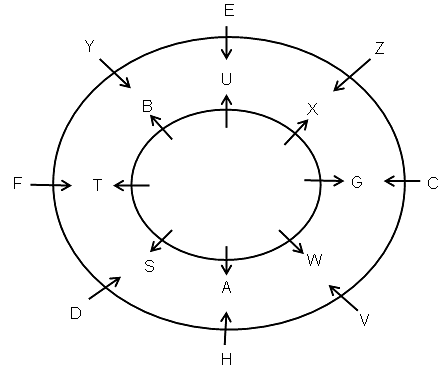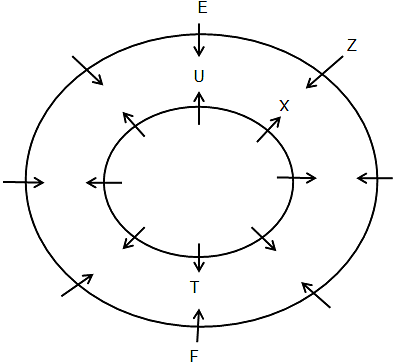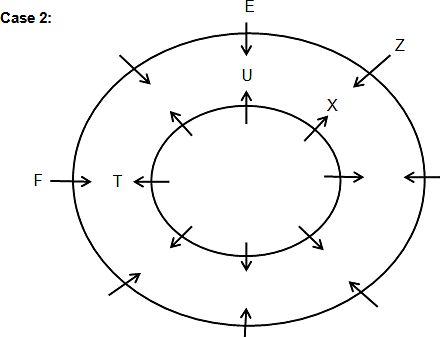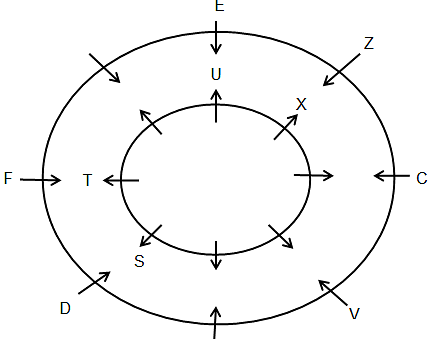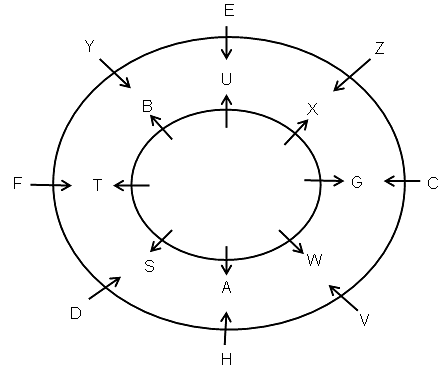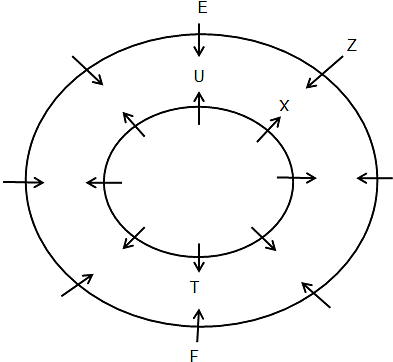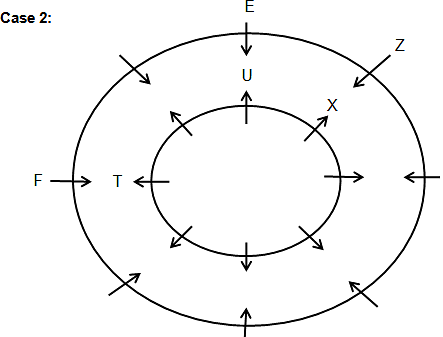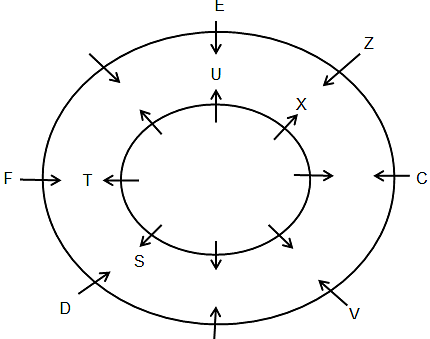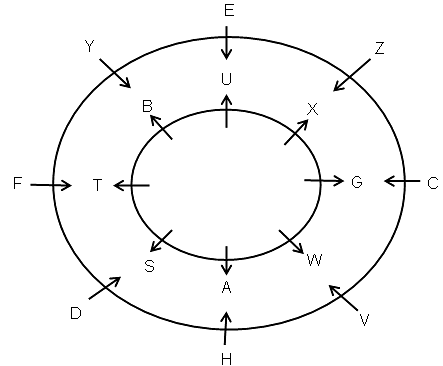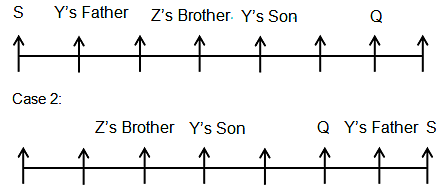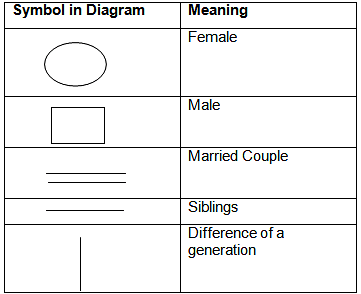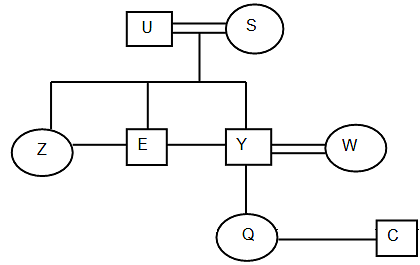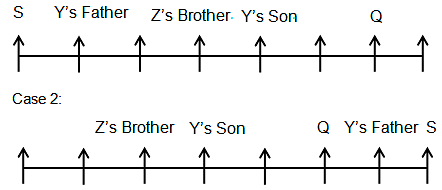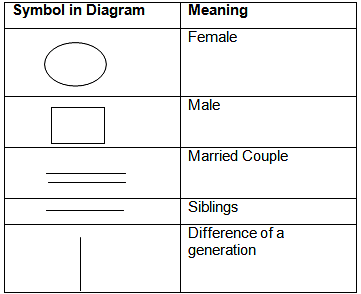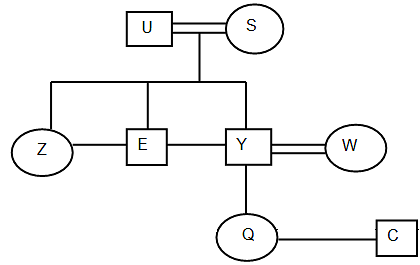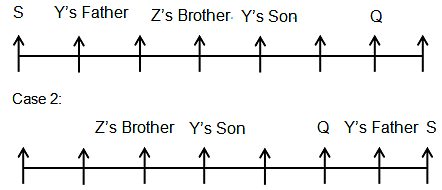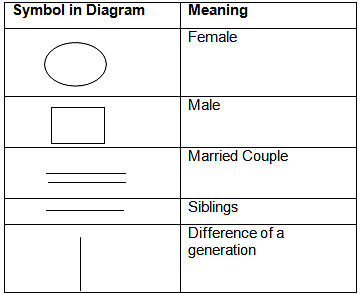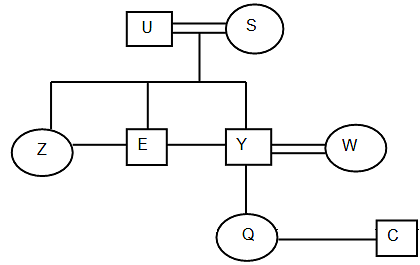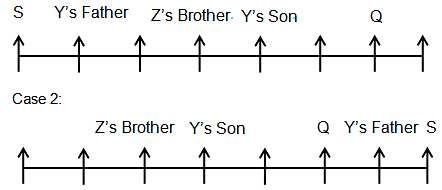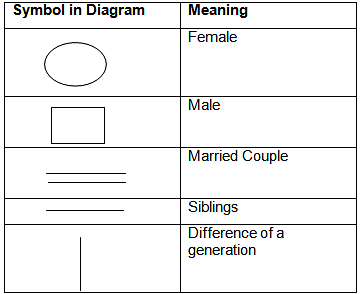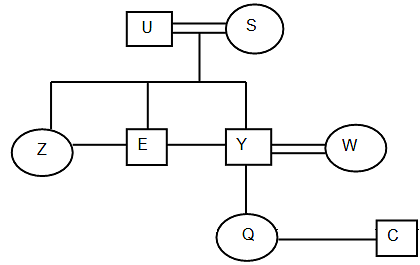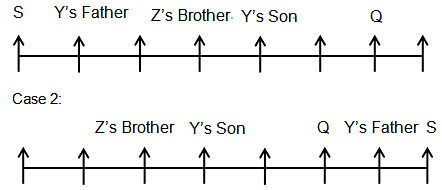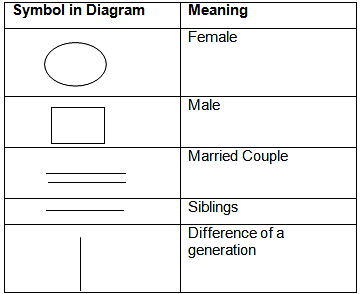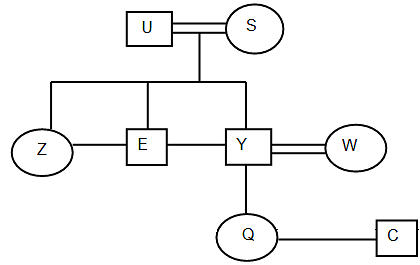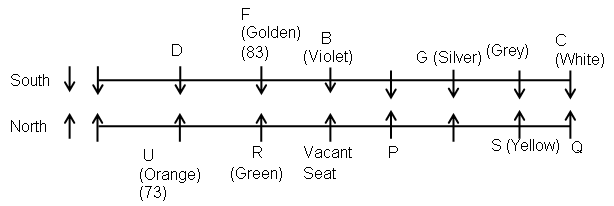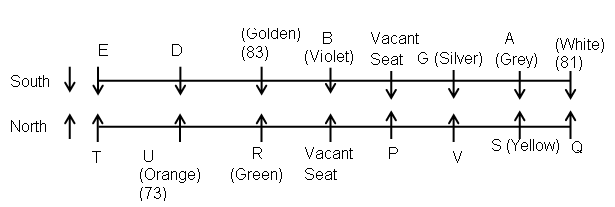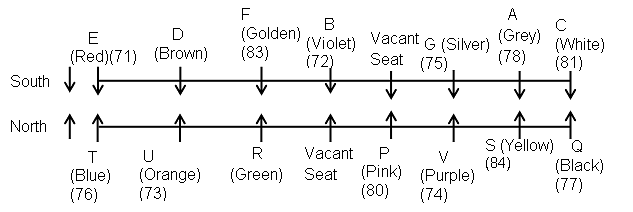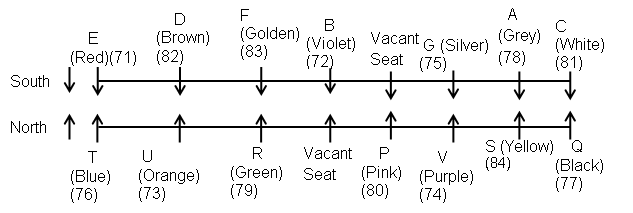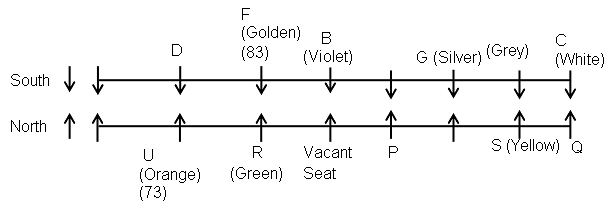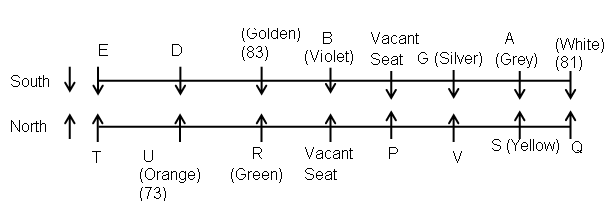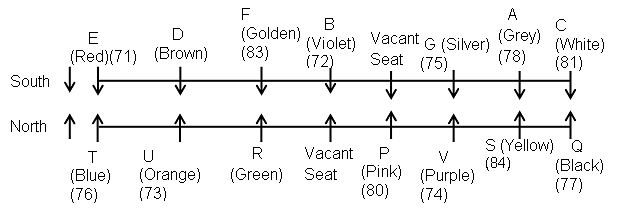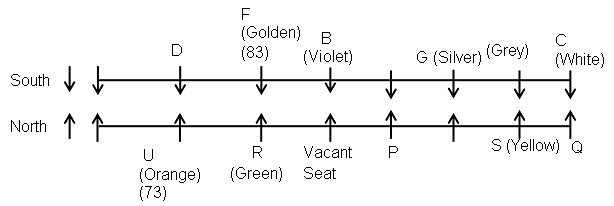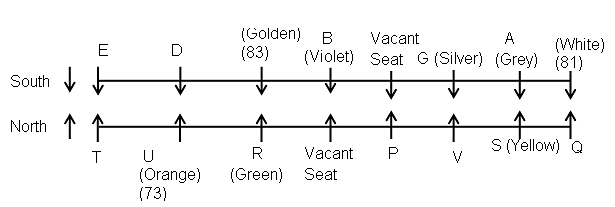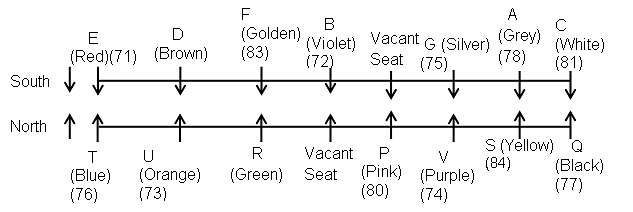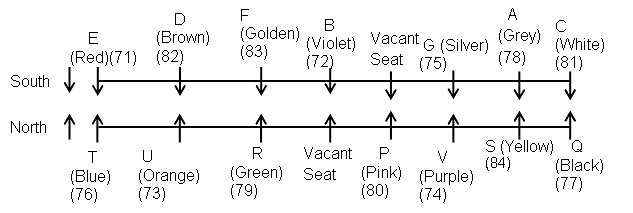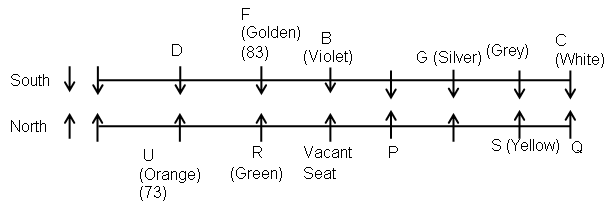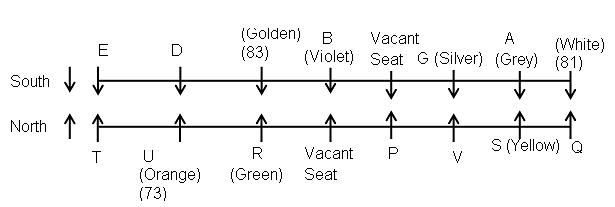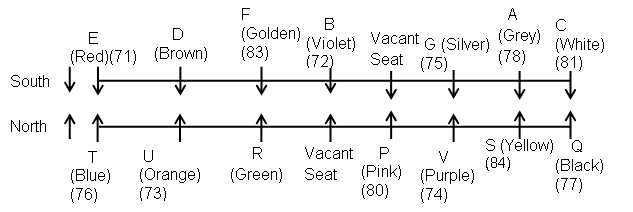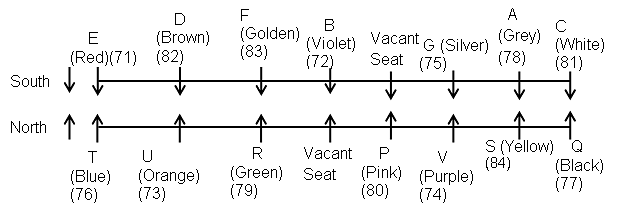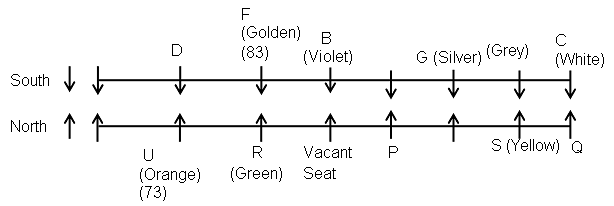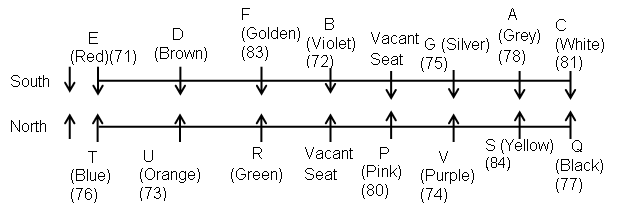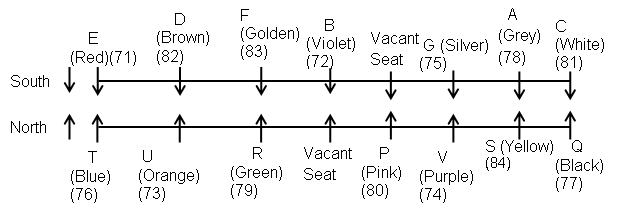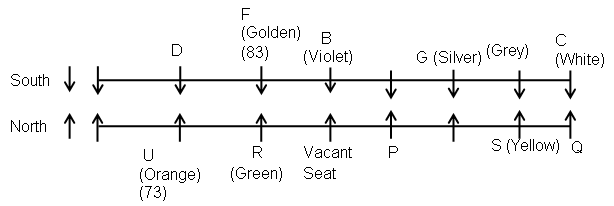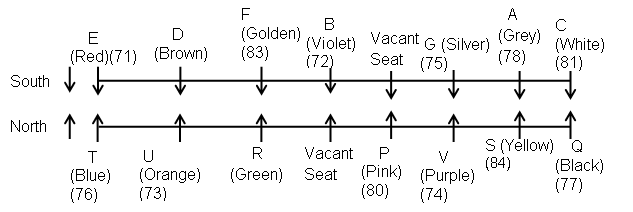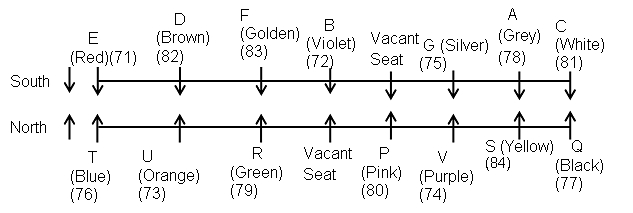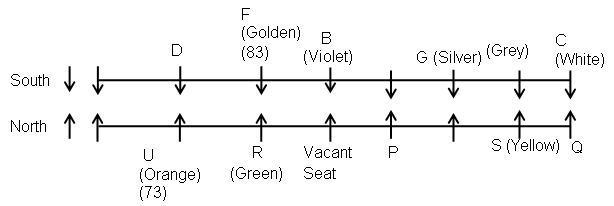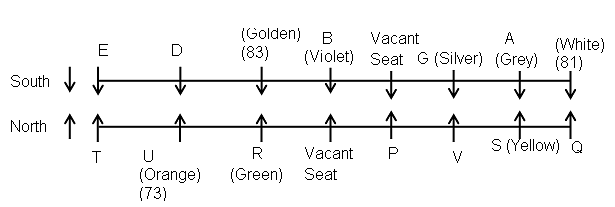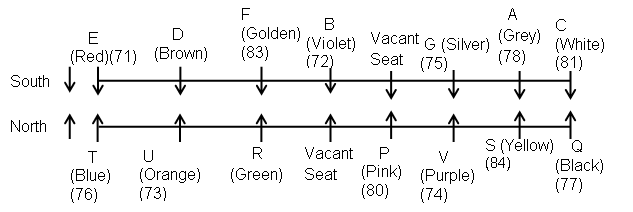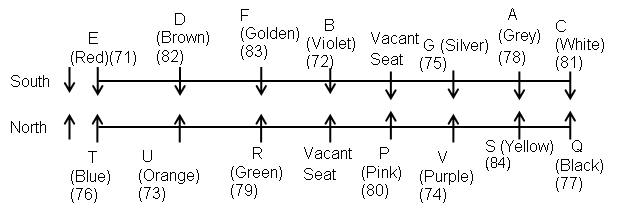IBPS PO Mains Mock Test - 5 - Bank Exams MCQ
30 Questions MCQ Test Mock Tests for Banking Exams 2024 - IBPS PO Mains Mock Test - 5
Direction: Read the following information carefully and answer the question given below-
There are certain number of persons sitting in a row and all were facing South and have their birthdays on 8th and 25th of four different months i.e. March, April, May and June but not necessarily in the same order. B is in the middle of the row. D is fifth to the right of E. B has birthday on 8th of the month which is having 31 days. Two persons sit between G and I who is five places away from K. Only three persons have birthday between D and I. M is third from one of the extreme ends but is not sitting between D and E. E is at one of the extreme end. Only one person has birthday before D. Number of persons between B and D is one less than the number of persons between D and N. N sits to the immediate left of M. E and G are having birthday in the same month having 30 days but not in April. Three people sit between I and B who is immediate right of K. K has birthday after M who is elder than N. Number of persons between I and B are same as number of persons between B and D. E’s birthday was held before G.
Q. How many persons were born after N if all were born in the same year?
Direction: Read the following information carefully and answer the question given below-
There are certain number of persons sitting in a row and all were facing South and have their birthdays on 8th and 25th of four different months i.e. March, April, May and June but not necessarily in the same order. B is in the middle of the row. D is fifth to the right of E. B has birthday on 8th of the month which is having 31 days. Two persons sit between G and I who is five places away from K. Only three persons have birthday between D and I. M is third from one of the extreme ends but is not sitting between D and E. E is at one of the extreme end. Only one person has birthday before D. Number of persons between B and D is one less than the number of persons between D and N. N sits to the immediate left of M. E and G are having birthday in the same month having 30 days but not in April. Three people sit between I and B who is immediate right of K. K has birthday after M who is elder than N. Number of persons between I and B are same as number of persons between B and D. E’s birthday was held before G.
Q. Who among the following are immediate neighbors?
| 1 Crore+ students have signed up on EduRev. Have you? Download the App |
Direction: Read the following information carefully and answer the question given below-
There are certain number of persons sitting in a row and all were facing South and have their birthdays on 8th and 25th of four different months i.e. March, April, May and June but not necessarily in the same order. B is in the middle of the row. D is fifth to the right of E. B has birthday on 8th of the month which is having 31 days. Two persons sit between G and I who is five places away from K. Only three persons have birthday between D and I. M is third from one of the extreme ends but is not sitting between D and E. E is at one of the extreme end. Only one person has birthday before D. Number of persons between B and D is one less than the number of persons between D and N. N sits to the immediate left of M. E and G are having birthday in the same month having 30 days but not in April. Three people sit between I and B who is immediate right of K. K has birthday after M who is elder than N. Number of persons between I and B are same as number of persons between B and D. E’s birthday was held before G.
Q. Who among the following is the eldest if all the persons were born in the same year?
Direction: Read the following information carefully and answer the question given below-
There are certain number of persons sitting in a row and all were facing South and have their birthdays on 8th and 25th of four different months i.e. March, April, May and June but not necessarily in the same order. B is in the middle of the row. D is fifth to the right of E. B has birthday on 8th of the month which is having 31 days. Two persons sit between G and I who is five places away from K. Only three persons have birthday between D and I. M is third from one of the extreme ends but is not sitting between D and E. E is at one of the extreme end. Only one person has birthday before D. Number of persons between B and D is one less than the number of persons between D and N. N sits to the immediate left of M. E and G are having birthday in the same month having 30 days but not in April. Three people sit between I and B who is immediate right of K. K has birthday after M who is elder than N. Number of persons between I and B are same as number of persons between B and D. E’s birthday was held before G.
Q. How many persons are sitting in the row?
Direction: Read the following information carefully and answer the question given below-
There are certain number of persons sitting in a row and all were facing South and have their birthdays on 8th and 25th of four different months i.e. March, April, May and June but not necessarily in the same order. B is in the middle of the row. D is fifth to the right of E. B has birthday on 8th of the month which is having 31 days. Two persons sit between G and I who is five places away from K. Only three persons have birthday between D and I. M is third from one of the extreme ends but is not sitting between D and E. E is at one of the extreme end. Only one person has birthday before D. Number of persons between B and D is one less than the number of persons between D and N. N sits to the immediate left of M. E and G are having birthday in the same month having 30 days but not in April. Three people sit between I and B who is immediate right of K. K has birthday after M who is elder than N. Number of persons between I and B are same as number of persons between B and D. E’s birthday was held before G.
Q. How many persons sit between I and E?
Direction: Read the following information carefully and answer the question given below-
There are certain number of persons sitting in a row and all were facing South and have their birthdays on 8th and 25th of four different months i.e. March, April, May and June but not necessarily in the same order. B is in the middle of the row. D is fifth to the right of E. B has birthday on 8th of the month which is having 31 days. Two persons sit between G and I who is five places away from K. Only three persons have birthday between D and I. M is third from one of the extreme ends but is not sitting between D and E. E is at one of the extreme end. Only one person has birthday before D. Number of persons between B and D is one less than the number of persons between D and N. N sits to the immediate left of M. E and G are having birthday in the same month having 30 days but not in April. Three people sit between I and B who is immediate right of K. K has birthday after M who is elder than N. Number of persons between I and B are same as number of persons between B and D. E’s birthday was held before G.
Q. How many persons have birthday between B and K?
Direction: Read the following information carefully and answer the question given below-
Sixteen persons Z, Y, X, W, V, U, T, S, H, G, F, E, D, C, B and A are sitting around two circular tables. There is small circular table inside the bigger circular table. The persons sitting around the inner circular table faces outside and the persons sitting around the outer circular table faces inside in such a way persons sitting on both tables facing each other.
Two persons sit between Y and H. Three persons are sitting between F and C who sits exactly between Z and V. X sits to the immediate right of U. Four persons are sitting between W and U. Only two persons are sitting between X and T who faces F. S sits to the immediate left of T and faces D. T and F sit on different tables. The one who faces V sits exactly between G and A who faces H. U who faces E, faces outside. Z faces X.
Q. Who among the following faces A?
Direction: Read the following information carefully and answer the question given below-
Sixteen persons Z, Y, X, W, V, U, T, S, H, G, F, E, D, C, B and A are sitting around two circular tables. There is small circular table inside the bigger circular table. The persons sitting around the inner circular table faces outside and the persons sitting around the outer circular table faces inside in such a way persons sitting on both tables facing each other.
Two persons sit between Y and H. Three persons are sitting between F and C who sits exactly between Z and V. X sits to the immediate right of U. Four persons are sitting between W and U. Only two persons are sitting between X and T who faces F. S sits to the immediate left of T and faces D. T and F sit on different tables. The one who faces V sits exactly between G and A who faces H. U who faces E, faces outside. Z faces X.
Q. How many persons sit between B and W?
Direction: Read the following information carefully and answer the question given below-
Sixteen persons Z, Y, X, W, V, U, T, S, H, G, F, E, D, C, B and A are sitting around two circular tables. There is small circular table inside the bigger circular table. The persons sitting around the inner circular table faces outside and the persons sitting around the outer circular table faces inside in such a way persons sitting on both tables facing each other.
Two persons sit between Y and H. Three persons are sitting between F and C who sits exactly between Z and V. X sits to the immediate right of U. Four persons are sitting between W and U. Only two persons are sitting between X and T who faces F. S sits to the immediate left of T and faces D. T and F sit on different tables. The one who faces V sits exactly between G and A who faces H. U who faces E, faces outside. Z faces X.
Q. Four of the following are alike in a certain way and hence form a group. Which of the following does not belong to the group?
Direction: Read the following information carefully and answer the question given below-
Sixteen persons Z, Y, X, W, V, U, T, S, H, G, F, E, D, C, B and A are sitting around two circular tables. There is small circular table inside the bigger circular table. The persons sitting around the inner circular table faces outside and the persons sitting around the outer circular table faces inside in such a way persons sitting on both tables facing each other.
Two persons sit between Y and H. Three persons are sitting between F and C who sits exactly between Z and V. X sits to the immediate right of U. Four persons are sitting between W and U. Only two persons are sitting between X and T who faces F. S sits to the immediate left of T and faces D. T and F sit on different tables. The one who faces V sits exactly between G and A who faces H. U who faces E, faces outside. Z faces X.
Q. Who among the following sits second to the right of T?
Direction: Read the following information carefully and answer the question given below-
Sixteen persons Z, Y, X, W, V, U, T, S, H, G, F, E, D, C, B and A are sitting around two circular tables. There is small circular table inside the bigger circular table. The persons sitting around the inner circular table faces outside and the persons sitting around the outer circular table faces inside in such a way persons sitting on both tables facing each other.
Two persons sit between Y and H. Three persons are sitting between F and C who sits exactly between Z and V. X sits to the immediate right of U. Four persons are sitting between W and U. Only two persons are sitting between X and T who faces F. S sits to the immediate left of T and faces D. T and F sit on different tables. The one who faces V sits exactly between G and A who faces H. U who faces E, faces outside. Z faces X.
Q. How many persons sit between E and the one who faces A?
Direction: Read the following information carefully and answer the question given below-
There are eight members Y, Z, U, W, Q, S, C and E. Each of them is related to Y in some way or the other and all of them have different chocolates among 20, 27, 33, 38, 40, 43, 45 and 50 but not necessarily in the same order and all are sitting in a straight line facing North.
Q is sitting second to right of Y’s son. Two people are sitting between Q and Z’s brother. Two people are sitting between Y’s son and Y’s father. S is an immediate neighbour of Y’s father. S is sitting at one of extreme ends. The sum of chocolates of C and Q is equal to sum of chocolates kept by W and E. One among the four have the highest number of chocolates and one among the four have the lowest number of chocolates. W and Y’s brother are sitting together. The difference between the chocolates of W and Z is equal to the difference between the chocolates of Q and U. Y’s brother is sitting second to left of Y. Two people are sitting between W and Y’s sister. Y is not an immediate neighbour of Q. C has more number of chocolates than Y but less than S. E’s father is sitting to the immediate right of Y’s daughter. Y’s wife is immediate neighbour of E. C is younger than U. Q does not have highest no of choclates and E have third highest number of choclates.
Q. How many chocolates does Y have?
Direction: Read the following information carefully and answer the question given below-
There are eight members Y, Z, U, W, Q, S, C and E. Each of them is related to Y in some way or the other and all of them have different chocolates among 20, 27, 33, 38, 40, 43, 45 and 50 but not necessarily in the same order and all are sitting in a straight line facing North.
Q is sitting second to right of Y’s son. Two people are sitting between Q and Z’s brother. Two people are sitting between Y’s son and Y’s father. S is an immediate neighbour of Y’s father. S is sitting at one of extreme ends. The sum of chocolates of C and Q is equal to sum of chocolates kept by W and E. One among the four have the highest number of chocolates and one among the four have the lowest number of chocolates. W and Y’s brother are sitting together. The difference between the chocolates of W and Z is equal to the difference between the chocolates of Q and U. Y’s brother is sitting second to left of Y. Two people are sitting between W and Y’s sister. Y is not an immediate neighbour of Q. C has more number of chocolates than Y but less than S. E’s father is sitting to the immediate right of Y’s daughter. Y’s wife is immediate neighbour of E. C is younger than U. Q does not have highest no of choclates and E have third highest number of choclates.
Q. Who among the following sits third to the left of C?
Direction: Read the following information carefully and answer the question given below-
There are eight members Y, Z, U, W, Q, S, C and E. Each of them is related to Y in some way or the other and all of them have different chocolates among 20, 27, 33, 38, 40, 43, 45 and 50 but not necessarily in the same order and all are sitting in a straight line facing North.
Q is sitting second to right of Y’s son. Two people are sitting between Q and Z’s brother. Two people are sitting between Y’s son and Y’s father. S is an immediate neighbour of Y’s father. S is sitting at one of extreme ends. The sum of chocolates of C and Q is equal to sum of chocolates kept by W and E. One among the four have the highest number of chocolates and one among the four have the lowest number of chocolates. W and Y’s brother are sitting together. The difference between the chocolates of W and Z is equal to the difference between the chocolates of Q and U. Y’s brother is sitting second to left of Y. Two people are sitting between W and Y’s sister. Y is not an immediate neighbour of Q. C has more number of chocolates than Y but less than S. E’s father is sitting to the immediate right of Y’s daughter. Y’s wife is immediate neighbour of E. C is younger than U. Q does not have highest no of choclates and E have third highest number of choclates.
Q. Who among the following is father of Y ?
Direction: Read the following information carefully and answer the question given below-
There are eight members Y, Z, U, W, Q, S, C and E. Each of them is related to Y in some way or the other and all of them have different chocolates among 20, 27, 33, 38, 40, 43, 45 and 50 but not necessarily in the same order and all are sitting in a straight line facing North.
Q is sitting second to right of Y’s son. Two people are sitting between Q and Z’s brother. Two people are sitting between Y’s son and Y’s father. S is an immediate neighbour of Y’s father. S is sitting at one of extreme ends. The sum of chocolates of C and Q is equal to sum of chocolates kept by W and E. One among the four have the highest number of chocolates and one among the four have the lowest number of chocolates. W and Y’s brother are sitting together. The difference between the chocolates of W and Z is equal to the difference between the chocolates of Q and U. Y’s brother is sitting second to left of Y. Two people are sitting between W and Y’s sister. Y is not an immediate neighbour of Q. C has more number of chocolates than Y but less than S. E’s father is sitting to the immediate right of Y’s daughter. Y’s wife is immediate neighbour of E. C is younger than U. Q does not have highest no of choclates and E have third highest number of choclates.
Q. How is S related to C?
Direction: Read the following information carefully and answer the question given below-
There are eight members Y, Z, U, W, Q, S, C and E. Each of them is related to Y in some way or the other and all of them have different chocolates among 20, 27, 33, 38, 40, 43, 45 and 50 but not necessarily in the same order and all are sitting in a straight line facing North.
Q is sitting second to right of Y’s son. Two people are sitting between Q and Z’s brother. Two people are sitting between Y’s son and Y’s father. S is an immediate neighbour of Y’s father. S is sitting at one of extreme ends. The sum of chocolates of C and Q is equal to sum of chocolates kept by W and E. One among the four have the highest number of chocolates and one among the four have the lowest number of chocolates. W and Y’s brother are sitting together. The difference between the chocolates of W and Z is equal to the difference between the chocolates of Q and U. Y’s brother is sitting second to left of Y. Two people are sitting between W and Y’s sister. Y is not an immediate neighbour of Q. C has more number of chocolates than Y but less than S. E’s father is sitting to the immediate right of Y’s daughter. Y’s wife is immediate neighbour of E. C is younger than U. Q does not have highest no of choclates and E have third highest number of choclates.
Q. What is the sum of chocolates of C and W?
Direction: Read the following information carefully and answer the question given below-
The questions are based on 5 given groups, each consisting of a 3-letter word preceded by 1 or 2-digit number.
8 JUG, 21 FOX, 35 AND, 16 ZER, 49 CUP
Q. If ‘B’ is added before each word which is preceded by odd number and ‘S’ is added after each word which is preceded by even number, how many meaningful words are formed after adding ‘B’ and ‘S’ respectively?
Direction: Read the following information carefully and answer the question given below-
The questions are based on 5 given groups, each consisting of a 3-letter word preceded by 1 or 2-digit number.
8 JUG, 21 FOX, 35 AND, 16 ZER, 49 CUP
Q. If ‘7’ is added to the number which is followed by a word starting with consonant and ‘5’ is added to the number which is followed by a word starting with vowel, how many numbers are there which is divisible by 3 after adding those digits?
Direction: Read the following information carefully and answer the question given below-
The questions are based on 5 given groups, each consisting of a 3-letter word preceded by 1 or 2-digit number.
8 JUG, 21 FOX, 35 AND, 16 ZER, 49 CUP
Q. If ‘L’ is added before each word which is preceded by a number which is divisible by 7 and ‘O’ is added after each word which is preceded by a number which is divisible by 4, how many meaningful English words can be formed after adding L and O respectively?
Direction: Read the following information carefully and answer the question given below-
The questions are based on 5 given groups, each consisting of a 3-letter word preceded by 1 or 2-digit number.
8 JUG, 21 FOX, 35 AND, 16 ZER, 49 CUP
Q. If ‘5’ is placed before each number which is followed by a meaningful word and ‘5’ is placed after the number of other words, how many numbers thus formed which are divisible by ‘7’ after adding those digits?
Direction: Read the following information carefully and answer the question given below-
The questions are based on 5 given groups, each consisting of a 3-letter word preceded by 1 or 2-digit number.
8 JUG, 21 FOX, 35 AND, 16 ZER, 49 CUP
Q. If ‘H’ is added before each word, how many meaningful words can be formed after adding ‘H’?
Direction: Read the following information carefully and answer the question given below-
Fourteen people are sitting in two parallel rows of sixteen seats each and one seat is vacant in each row. A, B, C, D, E, F and G are sitting in row 1 facing South. P, Q, R, S, T, U and V are sitting in row 2 facing north. Each likes different colours i.e. Red, Blue, Green, Yellow, Pink, Black, White, Golden, Silver, Orange, Purple, Brown, Grey and Violet but not necessarily in the same order. Each person has different weight from 71 to 84 but not necessarily in the same order. The difference between the weight of F and C is 2. S sits fourth to the right of R and likes Yellow. Only three people sit between Q and the vacant seat. F’s weight is 83 and is an immediate neighbour of D and B. The person whose weight is 71 is sitting second to the right of the one who like golden. Q does not like Pink or Purple. The one who likes Green faces the one who likes Golden. There are four persons sitting between the one whose weight is 84 and 76 respectively. G likes Silver and sits third from the left end. The one who likes Green sits opposite to the one who sits fourth right of the person who sits opposite to S. The person who likes Red weighs 71. C is not an immediate neighbour of D. T, who likes neither Pink nor Purple nor Black does not face G. Neither S nor R sits at the extreme ends of the row. The person whose weight is 80 is sitting third to the left of the one whose weight is 77 who sits at the extreme end of the row. D faces U. E is not an immediate neighbour of C. B likes Violet. Neither U nor P likes Purple. U sits third to the left of P and his weight is 73. Three seats are there between C and B who sits fourth right of the one who likes White. U likes Orange. G’s weight is multiple of 5. The person who likes the Red and Brown are adjacent to each other. Vacant seat of row 1 is not an immediate neighbour of D. V weight more than B but less than G and is an immediate neighbour of S but not of Q. The one whose weight is 84 faces the one whose weight is 78. The one who likes green has weight in odd number. Q sits at one of the extreme ends of the row. The person whose weight is 80 does not sit in the same row in which person whose weight is 83 or 78 is sitting. R does not like Red and Brown. Q is not an immediate neighbour of U. The one who likes Grey faces the one who likes Yellow. F neither likes Purple nor Yellow.
Q. Four of the following are alike in a certain way and hence form a group. Which of the following does not belong to that group?
Direction: Read the following information carefully and answer the question given below-
Fourteen people are sitting in two parallel rows of sixteen seats each and one seat is vacant in each row. A, B, C, D, E, F and G are sitting in row 1 facing South. P, Q, R, S, T, U and V are sitting in row 2 facing north. Each likes different colours i.e. Red, Blue, Green, Yellow, Pink, Black, White, Golden, Silver, Orange, Purple, Brown, Grey and Violet but not necessarily in the same order. Each person has different weight from 71 to 84 but not necessarily in the same order. The difference between the weight of F and C is 2. S sits fourth to the right of R and likes Yellow. Only three people sit between Q and the vacant seat. F’s weight is 83 and is an immediate neighbour of D and B. The person whose weight is 71 is sitting second to the right of the one who like golden. Q does not like Pink or Purple. The one who likes Green faces the one who likes Golden. There are four persons sitting between the one whose weight is 84 and 76 respectively. G likes Silver and sits third from the left end. The one who likes Green sits opposite to the one who sits fourth right of the person who sits opposite to S. The person who likes Red weighs 71. C is not an immediate neighbour of D. T, who likes neither Pink nor Purple nor Black does not face G. Neither S nor R sits at the extreme ends of the row. The person whose weight is 80 is sitting third to the left of the one whose weight is 77 who sits at the extreme end of the row. D faces U. E is not an immediate neighbour of C. B likes Violet. Neither U nor P likes Purple. U sits third to the left of P and his weight is 73. Three seats are there between C and B who sits fourth right of the one who likes White. U likes Orange. G’s weight is multiple of 5. The person who likes the Red and Brown are adjacent to each other. Vacant seat of row 1 is not an immediate neighbour of D. V weight more than B but less than G and is an immediate neighbour of S but not of Q. The one whose weight is 84 faces the one whose weight is 78. The one who likes green has weight in odd number. Q sits at one of the extreme ends of the row. The person whose weight is 80 does not sit in the same row in which person whose weight is 83 or 78 is sitting. R does not like Red and Brown. Q is not an immediate neighbour of U. The one who likes Grey faces the one who likes Yellow. F neither likes Purple nor Yellow.
Q. How many persons sit between the one who weighs 82 and the one who likes Golden?
Direction: Read the following information carefully and answer the question given below-
Fourteen people are sitting in two parallel rows of sixteen seats each and one seat is vacant in each row. A, B, C, D, E, F and G are sitting in row 1 facing South. P, Q, R, S, T, U and V are sitting in row 2 facing north. Each likes different colours i.e. Red, Blue, Green, Yellow, Pink, Black, White, Golden, Silver, Orange, Purple, Brown, Grey and Violet but not necessarily in the same order. Each person has different weight from 71 to 84 but not necessarily in the same order. The difference between the weight of F and C is 2. S sits fourth to the right of R and likes Yellow. Only three people sit between Q and the vacant seat. F’s weight is 83 and is an immediate neighbour of D and B. The person whose weight is 71 is sitting second to the right of the one who like golden. Q does not like Pink or Purple. The one who likes Green faces the one who likes Golden. There are four persons sitting between the one whose weight is 84 and 76 respectively. G likes Silver and sits third from the left end. The one who likes Green sits opposite to the one who sits fourth right of the person who sits opposite to S. The person who likes Red weighs 71. C is not an immediate neighbour of D. T, who likes neither Pink nor Purple nor Black does not face G. Neither S nor R sits at the extreme ends of the row. The person whose weight is 80 is sitting third to the left of the one whose weight is 77 who sits at the extreme end of the row. D faces U. E is not an immediate neighbour of C. B likes Violet. Neither U nor P likes Purple. U sits third to the left of P and his weight is 73. Three seats are there between C and B who sits fourth right of the one who likes White. U likes Orange. G’s weight is multiple of 5. The person who likes the Red and Brown are adjacent to each other. Vacant seat of row 1 is not an immediate neighbour of D. V weight more than B but less than G and is an immediate neighbour of S but not of Q. The one whose weight is 84 faces the one whose weight is 78. The one who likes green has weight in odd number. Q sits at one of the extreme ends of the row. The person whose weight is 80 does not sit in the same row in which person whose weight is 83 or 78 is sitting. R does not like Red and Brown. Q is not an immediate neighbour of U. The one who likes Grey faces the one who likes Yellow. F neither likes Purple nor Yellow.
Q. What is the sum of weight of D and P?
Direction: Read the following information carefully and answer the question given below-
Fourteen people are sitting in two parallel rows of sixteen seats each and one seat is vacant in each row. A, B, C, D, E, F and G are sitting in row 1 facing South. P, Q, R, S, T, U and V are sitting in row 2 facing north. Each likes different colours i.e. Red, Blue, Green, Yellow, Pink, Black, White, Golden, Silver, Orange, Purple, Brown, Grey and Violet but not necessarily in the same order. Each person has different weight from 71 to 84 but not necessarily in the same order. The difference between the weight of F and C is 2. S sits fourth to the right of R and likes Yellow. Only three people sit between Q and the vacant seat. F’s weight is 83 and is an immediate neighbour of D and B. The person whose weight is 71 is sitting second to the right of the one who like golden. Q does not like Pink or Purple. The one who likes Green faces the one who likes Golden. There are four persons sitting between the one whose weight is 84 and 76 respectively. G likes Silver and sits third from the left end. The one who likes Green sits opposite to the one who sits fourth right of the person who sits opposite to S. The person who likes Red weighs 71. C is not an immediate neighbour of D. T, who likes neither Pink nor Purple nor Black does not face G. Neither S nor R sits at the extreme ends of the row. The person whose weight is 80 is sitting third to the left of the one whose weight is 77 who sits at the extreme end of the row. D faces U. E is not an immediate neighbour of C. B likes Violet. Neither U nor P likes Purple. U sits third to the left of P and his weight is 73. Three seats are there between C and B who sits fourth right of the one who likes White. U likes Orange. G’s weight is multiple of 5. The person who likes the Red and Brown are adjacent to each other. Vacant seat of row 1 is not an immediate neighbour of D. V weight more than B but less than G and is an immediate neighbour of S but not of Q. The one whose weight is 84 faces the one whose weight is 78. The one who likes green has weight in odd number. Q sits at one of the extreme ends of the row. The person whose weight is 80 does not sit in the same row in which person whose weight is 83 or 78 is sitting. R does not like Red and Brown. Q is not an immediate neighbour of U. The one who likes Grey faces the one who likes Yellow. F neither likes Purple nor Yellow.
Q. Who among the following is thinnest?
Direction: Read the following information carefully and answer the question given below-
Fourteen people are sitting in two parallel rows of sixteen seats each and one seat is vacant in each row. A, B, C, D, E, F and G are sitting in row 1 facing South. P, Q, R, S, T, U and V are sitting in row 2 facing north. Each likes different colours i.e. Red, Blue, Green, Yellow, Pink, Black, White, Golden, Silver, Orange, Purple, Brown, Grey and Violet but not necessarily in the same order. Each person has different weight from 71 to 84 but not necessarily in the same order. The difference between the weight of F and C is 2. S sits fourth to the right of R and likes Yellow. Only three people sit between Q and the vacant seat. F’s weight is 83 and is an immediate neighbour of D and B. The person whose weight is 71 is sitting second to the right of the one who like golden. Q does not like Pink or Purple. The one who likes Green faces the one who likes Golden. There are four persons sitting between the one whose weight is 84 and 76 respectively. G likes Silver and sits third from the left end. The one who likes Green sits opposite to the one who sits fourth right of the person who sits opposite to S. The person who likes Red weighs 71. C is not an immediate neighbour of D. T, who likes neither Pink nor Purple nor Black does not face G. Neither S nor R sits at the extreme ends of the row. The person whose weight is 80 is sitting third to the left of the one whose weight is 77 who sits at the extreme end of the row. D faces U. E is not an immediate neighbour of C. B likes Violet. Neither U nor P likes Purple. U sits third to the left of P and his weight is 73. Three seats are there between C and B who sits fourth right of the one who likes White. U likes Orange. G’s weight is multiple of 5. The person who likes the Red and Brown are adjacent to each other. Vacant seat of row 1 is not an immediate neighbour of D. V weight more than B but less than G and is an immediate neighbour of S but not of Q. The one whose weight is 84 faces the one whose weight is 78. The one who likes green has weight in odd number. Q sits at one of the extreme ends of the row. The person whose weight is 80 does not sit in the same row in which person whose weight is 83 or 78 is sitting. R does not like Red and Brown. Q is not an immediate neighbour of U. The one who likes Grey faces the one who likes Yellow. F neither likes Purple nor Yellow.
Q. How many persons are heavier than the one who likes Pink?
Direction: Read the following information carefully and answer the question given below-
Fourteen people are sitting in two parallel rows of sixteen seats each and one seat is vacant in each row. A, B, C, D, E, F and G are sitting in row 1 facing South. P, Q, R, S, T, U and V are sitting in row 2 facing north. Each likes different colours i.e. Red, Blue, Green, Yellow, Pink, Black, White, Golden, Silver, Orange, Purple, Brown, Grey and Violet but not necessarily in the same order. Each person has different weight from 71 to 84 but not necessarily in the same order. The difference between the weight of F and C is 2. S sits fourth to the right of R and likes Yellow. Only three people sit between Q and the vacant seat. F’s weight is 83 and is an immediate neighbour of D and B. The person whose weight is 71 is sitting second to the right of the one who like golden. Q does not like Pink or Purple. The one who likes Green faces the one who likes Golden. There are four persons sitting between the one whose weight is 84 and 76 respectively. G likes Silver and sits third from the left end. The one who likes Green sits opposite to the one who sits fourth right of the person who sits opposite to S. The person who likes Red weighs 71. C is not an immediate neighbour of D. T, who likes neither Pink nor Purple nor Black does not face G. Neither S nor R sits at the extreme ends of the row. The person whose weight is 80 is sitting third to the left of the one whose weight is 77 who sits at the extreme end of the row. D faces U. E is not an immediate neighbour of C. B likes Violet. Neither U nor P likes Purple. U sits third to the left of P and his weight is 73. Three seats are there between C and B who sits fourth right of the one who likes White. U likes Orange. G’s weight is multiple of 5. The person who likes the Red and Brown are adjacent to each other. Vacant seat of row 1 is not an immediate neighbour of D. V weight more than B but less than G and is an immediate neighbour of S but not of Q. The one whose weight is 84 faces the one whose weight is 78. The one who likes green has weight in odd number. Q sits at one of the extreme ends of the row. The person whose weight is 80 does not sit in the same row in which person whose weight is 83 or 78 is sitting. R does not like Red and Brown. Q is not an immediate neighbour of U. The one who likes Grey faces the one who likes Yellow. F neither likes Purple nor Yellow.
Q. How many persons sit between D and A?
Direction: Read the following information carefully and answer the question given below-
Fourteen people are sitting in two parallel rows of sixteen seats each and one seat is vacant in each row. A, B, C, D, E, F and G are sitting in row 1 facing South. P, Q, R, S, T, U and V are sitting in row 2 facing north. Each likes different colours i.e. Red, Blue, Green, Yellow, Pink, Black, White, Golden, Silver, Orange, Purple, Brown, Grey and Violet but not necessarily in the same order. Each person has different weight from 71 to 84 but not necessarily in the same order. The difference between the weight of F and C is 2. S sits fourth to the right of R and likes Yellow. Only three people sit between Q and the vacant seat. F’s weight is 83 and is an immediate neighbour of D and B. The person whose weight is 71 is sitting second to the right of the one who like golden. Q does not like Pink or Purple. The one who likes Green faces the one who likes Golden. There are four persons sitting between the one whose weight is 84 and 76 respectively. G likes Silver and sits third from the left end. The one who likes Green sits opposite to the one who sits fourth right of the person who sits opposite to S. The person who likes Red weighs 71. C is not an immediate neighbour of D. T, who likes neither Pink nor Purple nor Black does not face G. Neither S nor R sits at the extreme ends of the row. The person whose weight is 80 is sitting third to the left of the one whose weight is 77 who sits at the extreme end of the row. D faces U. E is not an immediate neighbour of C. B likes Violet. Neither U nor P likes Purple. U sits third to the left of P and his weight is 73. Three seats are there between C and B who sits fourth right of the one who likes White. U likes Orange. G’s weight is multiple of 5. The person who likes the Red and Brown are adjacent to each other. Vacant seat of row 1 is not an immediate neighbour of D. V weight more than B but less than G and is an immediate neighbour of S but not of Q. The one whose weight is 84 faces the one whose weight is 78. The one who likes green has weight in odd number. Q sits at one of the extreme ends of the row. The person whose weight is 80 does not sit in the same row in which person whose weight is 83 or 78 is sitting. R does not like Red and Brown. Q is not an immediate neighbour of U. The one who likes Grey faces the one who likes Yellow. F neither likes Purple nor Yellow.
Q. Who among the following weighs 79?
Direction: Read the following information carefully and answer the question given below-
In a certain code,
today positive decent found is written as @6A @6V &7B @5Q
people attend daily party’ is written as @6V *6V #5B @5A
regular fitness sound health is written as @6A @8P #8O @5E
picture perfect quality movie is written as #6B #8B #8V @8Q
Q. What is the code of ‘Amazon Prime’
Direction: Read the following information carefully and answer the question given below-
In a certain code,
today positive decent found is written as @6A @6V &7B @5Q
people attend daily party’ is written as @6V *6V #5B @5A
regular fitness sound health is written as @6A @8P #8O @5E
picture perfect quality movie is written as #6B #8B #8V @8Q
Q. What is the code for the word ‘product’?
|
160 tests
|


